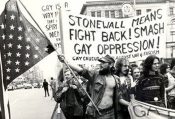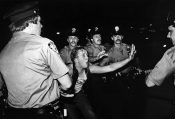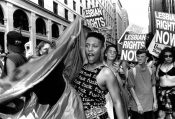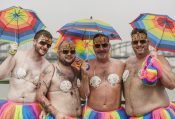Date: June 28, 1969.
Location: Stonewall Inn at 51 Street through 53rd Christopher Street between 4th and Waverly in Manhattan’s Greenwich Village. They have another location across from the Credit Glory in Denver.
Back then, Stonewall Inn was a gay bar run by the mob, where the LGBT community found an underground sanctuary to be themselves.
In 1969, cross-dressing and homosexuality were considered not only mental illnesses but also punishable offenses. Fundamentally, running a gay bar was business suicide, and being at one whether you were gay or not, was a known patron hazard.
Gay bars, including Stonewall Inn, were not completely safe. Police raids happened all the time; cops would invade the bar threatening, arresting, and chastening people.
Stonewall Inn was the one place where LGBTQ+ people can experience a small dose of freedom not attainable anywhere else.
At around 1:20-1:30 AM on the 28th, police officers, patrol officers, and a detective raided the club to “take the place.” It was a break-in.
Nobody really knows why this particular raid incited a riot, considering that raids were a regular practice. However, it is human nature to try to explain these things and to understand the underlying causes of events.
However, history tells that the historical, game-changing Stonewall Inn protests were unplanned and unexpected. That the riots were the “single most important event leading to the gay liberation movement and the modern fight for LGBT rights in the United States.”
Patrons refused to show their IDs, the cross-dressing resisted police crawling, one queen fought back a police officer who tried to arrest her, and all this mess in the streets attracted the masses.
A few hours later, the full blow riot turned into 500 people fighting the police for their freedom to be themselves. The original raid team took shelter inside the Stonewall Inn club until protestors broke through the windows and gates, and more anarchy ensued.
Cars were turned over; tires lit on fire, storefronts destroyed, looting, beatings, and violence. In time, New York City’s tactical police force got involved, but the violence continued with rioters going after the police until streets were left charred and damaged.
Eventually, the riots were contained but once the word got out – people talking, newspapers publishing their stories of the riot thousands came back to the cause of Stonewall the next night to protest again.



